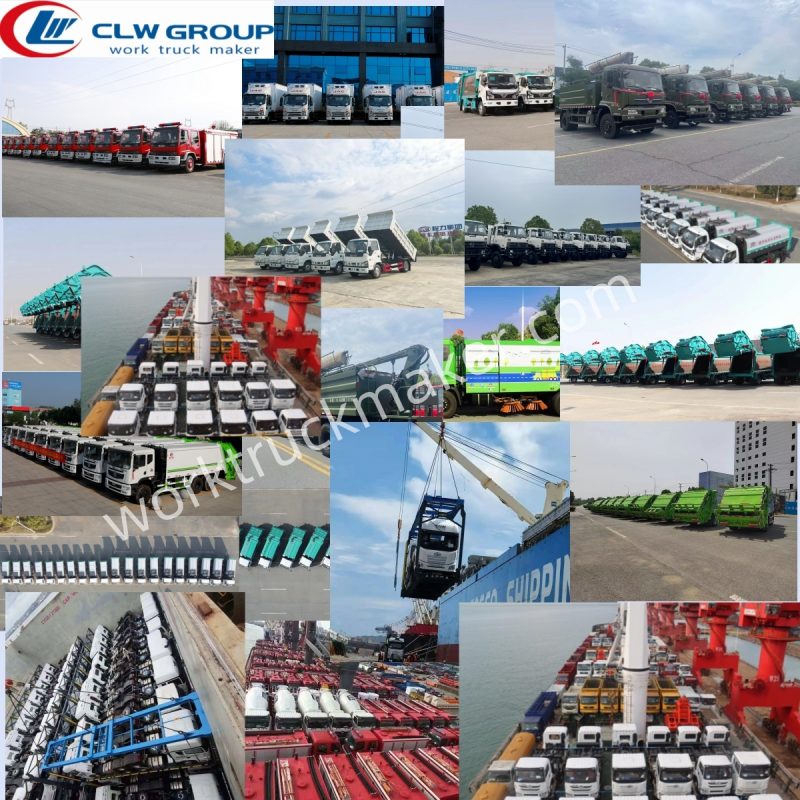Introduction:
Rural areas play a crucial role in the economic and social development of any country. However, due to their unique challenges and limitations, rural communities often face difficulties in accessing essential services and resources. One of the key challenges in rural areas is the lack of adequate infrastructure and equipment for handling heavy lifting tasks. This is where truck-mounted cranes come into play as versatile and efficient solutions for addressing the needs of rural communities.
In this comprehensive guide, we will explore the benefits and applications of truck-mounted cranes in rural areas, their impact on rural development, and the considerations to keep in mind when choosing and operating these machines.
Benefits of Truck-Mounted Cranes in Rural Areas:
1. Versatility: Truck-mounted cranes are highly versatile machines that can be easily transported to remote locations in rural areas. Their mobility allows them to reach areas with limited access, making them ideal for construction, agriculture, and emergency response activities.
2. Efficiency: Truck-mounted cranes are known for their efficiency in handling heavy lifting tasks. They can lift and move heavy materials, equipment, and machinery with precision and speed, reducing manual labor and improving productivity in rural settings.
3. Cost-Effectiveness: Investing in a truck-mounted crane can be a cost-effective solution for rural communities. These machines eliminate the need for hiring expensive crane services or renting heavy machinery, saving money in the long run.

4. Safety: Truck-mounted cranes are designed with safety features to ensure the well-being of operators and workers in rural areas. With proper training and maintenance, these machines can significantly reduce the risk of accidents and injuries during lifting operations.
5. Time-Saving: Time is of the essence in rural development projects, and truck-mounted cranes help save valuable time by completing lifting tasks quickly and efficiently. This allows for faster project completion and increased productivity in rural areas.
Applications of Truck-Mounted Cranes in Rural Areas:
1. Construction Projects: Truck-mounted cranes are essential for construction projects in rural areas, where heavy materials and equipment need to be lifted and transported to the site. These cranes can be used for building roads, bridges, schools, and other infrastructure projects in remote locations.
2. Agriculture: In rural agricultural settings, truck-mounted cranes play a vital role in handling heavy farming equipment, loading and unloading crops, and assisting in irrigation and livestock management. These cranes help farmers improve efficiency and productivity on their farms.
3. Disaster Response: During natural disasters such as floods, earthquakes, or wildfires, truck-mounted cranes are valuable tools for emergency response efforts in rural areas. They can be used to clear debris, rescue trapped individuals, and transport supplies to affected communities quickly and efficiently.
4. Forestry and Logging: Truck-mounted cranes are commonly used in forestry and logging operations in rural areas to lift and transport heavy timber, clear land for new plantations, and assist in the maintenance of logging equipment. These cranes help improve safety and efficiency in the forestry industry.
5. Utility Maintenance: Rural areas often face challenges in maintaining utility infrastructure such as power lines, water pipes, and telecommunications towers. Truck-mounted cranes are essential for lifting and installing utility poles, repairing damaged lines, and conducting maintenance work in hard-to-reach areas.
Considerations for Choosing and Operating Truck-Mounted Cranes in Rural Areas:
1. Best box trucks for small businesses and Reach: When selecting a truck-mounted crane for rural applications, consider the machine's lifting capacity and reach to ensure it can handle the required loads and reach the desired heights. Choose a crane with sufficient capacity to meet the lifting requirements of your projects.
2. Terrain and Accessibility: Rural areas are characterized by uneven terrain and limited accessibility, which can pose challenges for crane operations. Ensure that the truck-mounted crane you choose is equipped with features such as all-terrain capabilities, stabilizers, and outriggers to navigate rough terrain and maintain stability during lifting tasks.
3. Maintenance and Inspections: Regular maintenance and inspections are essential for the safe operation of truck-mounted cranes in rural areas. Develop a maintenance schedule and conduct thorough inspections of the crane's components, hydraulics, and safety systems to prevent breakdowns and ensure optimal performance.
4. Operator Training: Proper training and certification of crane operators are critical for the safe and efficient operation of truck-mounted cranes in rural settings. Ensure that operators receive adequate training on crane operation, safety protocols, and emergency procedures to minimize risks and ensure compliance with industry standards.
5. Compliance with Regulations: Familiarize yourself with local regulations and safety standards governing the operation of truck-mounted cranes in rural areas. Ensure that your crane meets all regulatory requirements, such as load capacity limits, licensing, and insurance, to avoid penalties and ensure legal compliance.
Conclusion:
Truck-mounted cranes are valuable assets for rural development initiatives, offering versatility, efficiency, and cost-effectiveness in handling heavy lifting tasks in remote locations. By investing in these machines and following best practices for their selection and operation, rural communities can enhance their infrastructure, boost productivity, and improve the quality of life for residents.
As we continue to address the unique challenges of rural development, truck-mounted cranes will play a crucial role in supporting construction projects, agriculture, emergency response efforts, and other essential activities in rural areas. By harnessing the power of these versatile machines, we can drive sustainable development and prosperity in rural communities around the world.
